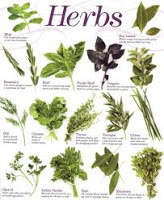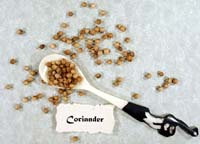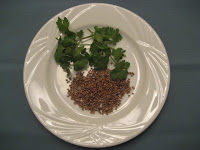
Catherine, a new reader of The Armenian Kitchen wrote asking
for a common name of a specialty herb
she came across.
for a common name of a specialty herb
she came across.
Here’s her request:
“While searching for Armenian Herbed Flatbread information I
found your site and also a reference to a “specialty” herb used. Can you give me the English or Latin name of
this herb. The special herb is called
either [sic] carmantyuc or kndzmdzuk.”
found your site and also a reference to a “specialty” herb used. Can you give me the English or Latin name of
this herb. The special herb is called
either [sic] carmantyuc or kndzmdzuk.”
So, I did some hunting, came up empty-handed, and suggested
to Catherine that I’d put this request on the website.
to Catherine that I’d put this request on the website.
Catherine thought
that was a great idea, and added:
that was a great idea, and added:
“I am always interested in new-to-me culinary herbs and
spices. I live in the Phoenix, AZ area
and because of that I can grow just about any herb or spice (with rare
exceptions) here. Regarding the herb in
question, it may be a regional variety of a common family, like oregano, thyme
or mint, so a ‘hint’ may help find it :-)”
spices. I live in the Phoenix, AZ area
and because of that I can grow just about any herb or spice (with rare
exceptions) here. Regarding the herb in
question, it may be a regional variety of a common family, like oregano, thyme
or mint, so a ‘hint’ may help find it :-)”
There you have it, folks.
If anyone reading this knows an English or Latin name for carmantyuc
or kndzmdzuk, please leave a comment, or email robyn@thearmeniankitchen.com.
or kndzmdzuk, please leave a comment, or email robyn@thearmeniankitchen.com.
Once we have an answer, I’ll post it for all to see. Thanks a bunch!
(Visited 674 times, 1 visits today)





Sounds like sev gundug (black seed).
Asked my Armenian pal who was born in Istanbul, and all she could find was this site . http://www.rootsimple.com/2011/02/zhengyalov-hats/
I just found a recipe for Djingialov Hats in the AGBU cookbook, Flavors with History… Armenian Cuisine. Although the recipe name is spelled differently from the one mentioned in the above comment, this one lists specific herbs used in the preparation: sage, thyme, rosemary, oregano, mint, cilantro, parsley, chives, etc. So far, that's all I've discovered.
And so it's come full circle — my Armenian pal's cousin wrote the following: If they're foraging for herbs like chickweed, mint, etc. then go find out native herbs in Karabagh region and you'll get a good idea what's edible, abundant there.
Could be thyme since it grows wild abundantly many places. Maybe sorrell.
These people are looking for it as well, probably from the same website source:
http://thearmeniankitchen.com/2013/01/carmantyuc-or-kndzmdzuk-does-anybody.html
Dear MG,
Thank you so much for taking the time to help figure this out. Your participation is truly appreciated!
karamdzuk/kndzmndzuk are sold in russia as wild cilantro or wild coriander.
hope that helps.
After looking through a bunch of Armenian dictionaries, including the superlative online Nayiri, it appears that this herb (Armenian spelling կարմանտյուկ or կնդձմնձուկ) is some kind of herb native to Karabagh. Even in pages where the Latin names of the other herbs is denoted, this herb is only listed by its Armenian name.
Considering the large number of other herbs used in the preparation of Jenkyalov Hats, I think you can pretty much use anything that is in the right herb family.
For the record, the recipes list: green onion, spring (green) garlic, cilantro, karamtyuk/kndzmnzuk, cerastium, trtntjuk (pickles?), mint, and urtica. I assume also salt/pepper. Some commentators have also suggested sumac.
Frankly, if you can find even half of these herbs, you're doing pretty well.
Sev gundug should be on the list! It's in those Armenian breads I used to have as a kid, both flat breads and choeregs! I think it's called black seed in English.
I BELIEVE THE GUNDIG IS NIGELLA.
Sev Gundug is also known as Corek otu (in turkish), and they are nigella seeds in english
I know the "sev gndig" as "black caraway". According to Wikipedia, that is a common name for nigella. But I have eaten "jenkyalov hats" and I don't remember it having any sev gndig. And in the videos that I have seen, the stuffing does not have any seeds; just herbs.
Isn't nigella seed(sev gundig) also known as onion seed?
Nigella Seed is also known as Black Sesame in the US (I've grown it
Robyn and all THANK YOU so much for jumping in on this request. I think from the original description of the recipe the suggestions of sorrel would be a logical fit but I think Anon's reference to the Russian herb for sale with the so-similar name might also fit – cilantro is widely used in many ethnic dishes. I thought you all might like to know about a wonderful spice site – here is his page on cilantro: (Thank you all again).
http://gernot-katzers-spice-pages.com/engl/Cori_sat.html
Hi,
I inherited my husband's Armenian grandmother's Choyreg recipe. It calls for sev gundeeg. I also have a jar that she gave us that has lasted along time. It does look like a small black sesame seed. It is now almost gone, where can you buy it? Any ideas?
Hi Anonymous, on the assumption that they are Nigella – I found two links for you. Amazon has them listed:
http://www.amazon.com/Black-Nigella-Seeds-ziyad-200g/dp/B000LRH942/ref=sr_1_2?ie=UTF8&qid=1362831456&sr=8-2&keywords=nigella+seeds
And some information on them and regional references:
http://en.wikipedia.org/wiki/Nigella_sativa
Carmantyuc or kndzmdzuk, it should be Chervil (Anthriscus cerefolium),
some information on them
https://en.wikipedia.org/wiki/Chervil
Anonymous, thank you for the tip it might be chervil – "wild chervil" is listed in some sites. I am still hoping to find some verification of it. In looking through translation sites, the name "kndzmdzuk" Could be the Karbagh region dialect, Russian, Farsi or Turkish and not Armenian as apparently there were those 3 cultural influences. I really appreciate everyone's thoughts.
Good News Everyone – I got confirmation that anonymous is correct. kndzmdzuk/kermendzuk is Chervil – makes sense in combination with the other herbs which I recognized for its anise/licorice flavor. Heghineh cooking video. She confirmed in the comments https://www.youtube.com/watch?v=tk1owxbmVXc&index=1&list=LLWZ-UiMaebx4nMJlCdf7jRg